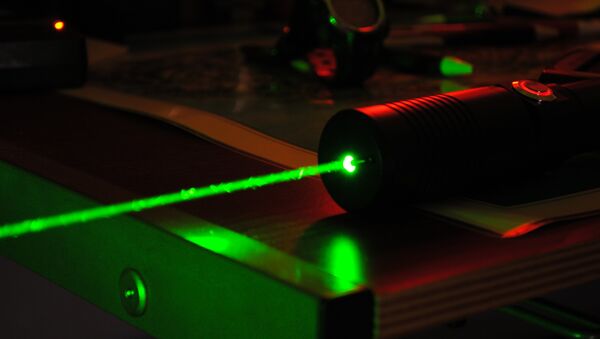The US Intelligence Advanced Research Projects Activity (IAPRA) announced plans this week to develop a hand-held laser-based remote sensor capable of detecting and identifying chemical weapons, explosives, narcotics and biological agents from distances of up to 100 feet.
The detection laser will be produced with funds from the US Air Force granted to five companies – LGS Innovations, Physical Sciences, Photonics Inc., Block Engineering Inc. and Leidos Inc.
The project, called Standoff Illuminator for Measuring Absorbance and Reflectance Infrared Light Signatures (SILMARILS), aims to solve the primary challenge of detecting illicit or dangerous substances; avoiding physical contact that could place US security agents at risk.
Current X-ray-based techniques, like those at major airports that scan suitcases and luggage, require agents to be in close proximity to a potentially dangerous object, and do nothing to prevent those items from finding their way into crowded airport entry lines.
The limitations of such technologies were witnessed during the March 22 Brussels airport and train station attacks, in which Daesh extremists successfully smuggled explosives into crowded lines, resulting in catastrophic casualty figures. Although current tech claims to protect individuals after they have been screened by security, the safety of TSA agents and those waiting in departure lines remains compromised.
The new device "would use infrared lasers to measure the signature of chemical agents and different molecules so that it’s much safer and a more practical way of interrogating a surface like the bottom of someone’s shoe," said Kevin Kelly, CEO of LGS Innovations which was awarded $11 million over four years by the SILMARILS project, DefenseOne reported.
Additional technical challenges facing development teams include ensuring that the laser remains eye-safe and visually unobservable, in addition to building a device that is "human-portable size."
US officials hope that the device could be developed to the extent that law enforcement, national security personnel and airport security could use it in a drive-by fashion to secure areas around crowds, including public events, airport departure lines and train stations.




